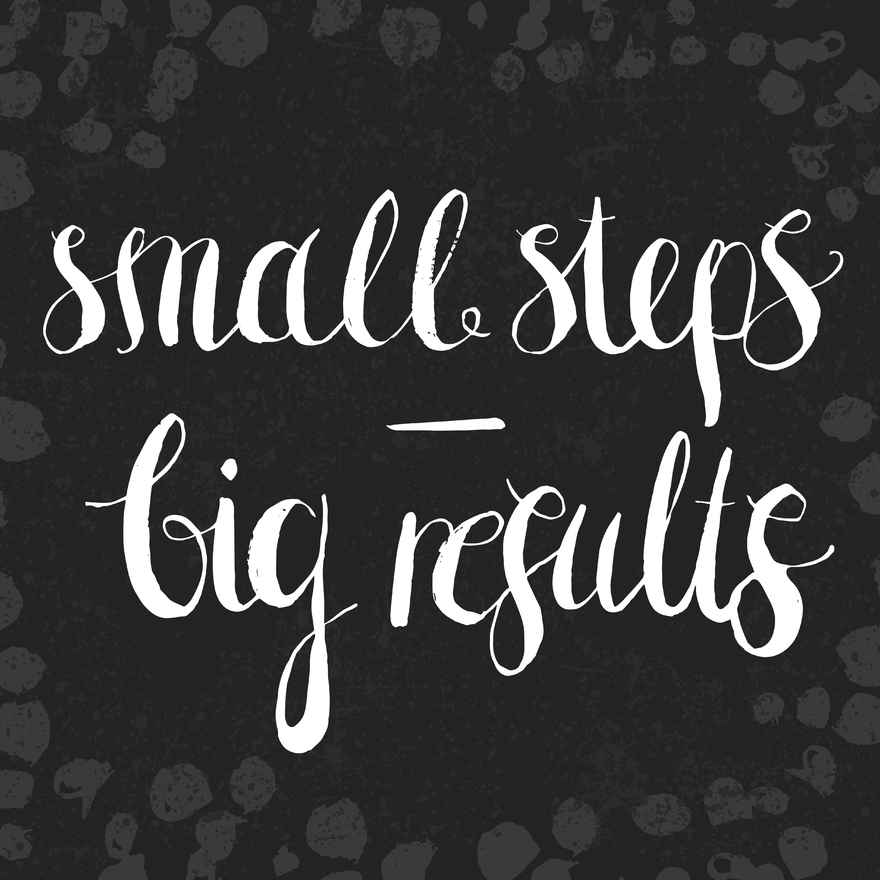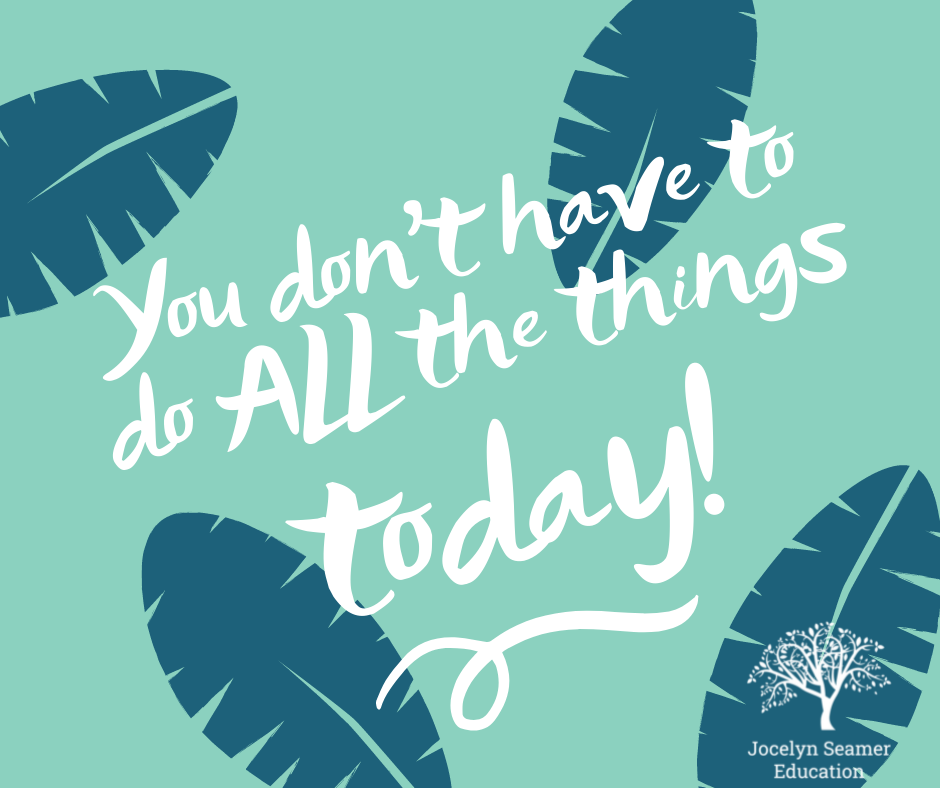Simple Steps for Big Change

It is the school holidays and I know that it is very likely you have half of your brain occupied by what you’ll be doing next term to create great learning opportunities for your students. You might have big plans that you are excited about, or you might have big wishes that you know you can’t implement because your school still follows a balanced literacy approach. Whether you are in the first or second situation, I want you to know that while our goal is to have a fully evidence aligned classroom program, we can still create change for students with small steps.

In fact, it’s probably better if you don’t try. There is a big difference between being interested in change and being committed to change. When we are interested in change, we do things when it’s convenient and easy. When we are committed to change, we have a ‘whatever it takes’ attitude and stick with the plan no matter what else is happening. It is MUCH easier to be committed to small steps that are sustainable. We all know that the reality of schools is that we are usually juggling our classrooms in a delicate balance that can so very easily be disrupted by illness, a new student in our class, school events, COVID lockdowns or a sudden assembly to listen to a local celebrity tell our students something ‘important’. In the face of this juggle, trying to create wholesale change quickly, pretty much dooms our efforts to failure, because when the going gets tough, we retreat to our comfort zones or fall in a heap. It’s not about being a good or a bad teacher. It’s about being human.
So this week I want to share some ‘steps’ that you can take to work towards creating that marvellous evidence-aligned classroom program we all aspire to.
|
|
First Step |
Next Step |
|
Sight Words |
Make the switch from teaching them as whole words to pointing out the tricky parts and the regular parts. Include reading and writing of the words in the same lesson. Expect that students sound out all words they have the code knowledge for. |
Ditch the ‘lists’ of words taught in isolation and switch to only the words that are irregular and needed for reading decodable texts or students are consistent needing for writing. |
|
Phonics |
Choose a scope and sequence and stick to it (hopefully across all classes). Instead of using songs and stories to teach the phoneme/grapheme correspondence (sounds) switch to teaching children to recognise the graphemes in a simple lesson where you show them the grapheme and they both read and write them (from memory) every lesson.
|
Include word level reading and spelling in every phonics lesson using a cumulative list of words that matches to the scope and sequence. |
|
Review |
Instead of showing the whole alphabet, even when they haven’t learned the graphemes yet, just focus on the sounds they know. |
Differentiate the review to match the needs of your students and do it every day in a fast paced lesson to consolidate knowledge and skills. Include word level reading and spelling in the review.
|
|
Group work |
Instead of grouping based on benchmarking levels, group based on learning needs, phonics knowledge and phonemic awareness skills. You can find a set of lesson plans for this work here. Instead of having students do 'activities', have them do partner reading or word level work. |
Aim to cut down the number of groups you have so that you have the majority of the class learning the same content with a group for students who have additional needs and a group for your highflyers who can already read Harry Potter.
|
|
Instructional Routines |
Instead of trying to have a different way to teach the Big 6 every lesson or every week, stick to one instructional routine for each area that you adjust in response to student needs. |
Have all classes in the early years using the same instructional routines and maybe even look at streamlining by grouping students with additional needs and the high flyers across classes so that every teacher isn’t trying to do everything.
|
|
Spelling |
Instead of sending home a spelling list that doesn’t link to any learning each week, align the words children practice to your phonics approach. So if you are teaching vowel digraphs such as ‘ai’ in your phonics lesson, the words that go home contain that sound. |
Don’t send home spelling lists at all and ditch the Friday spelling test. Instead, conduct a weekly assessment using dictated sentences and use these sentences to decide if students are ready to move on to new graphemes.
|
|
Home Reading |
Instead of sending home books that contain lots of sounds and high frequency words children don’t know, send home sentence strips, printed passages or decodable texts if you have them. (or if you are forced to send the predictable text, send the decodable stuff too and have a ‘quiet word’ with parents about what to focus on) |
Fully align home reading to classroom instruction. Students take home the book they have been reading in decoding lessons to read to their families. When children can read 90 words per minute and know the full alphabetic code ,send home passages that link to classroom content such as HASS or Science rather than predictable texts.
|
|
Supporting Struggling Students |
Instead of giving these students more instruction in 3 cueing and reading strategies, focus on developing phoneme grapheme correspondence and providing decodable texts.
|
Fully align your tier 2 intervention with your evidence informed Tier 1 instruction.
|
I have been known to say that half measure are BS. That’s true, but half measures come about when there is an attempt to ‘add a bit’ of evidence aligned practice, such as putting decodable texts into early years classrooms, with no intention of moving beyond that to align things fully. Taking reasonable, measured steps to move towards a bigger goal is not a half measure. It is a sensible way to plan for sustainable growth in teacher skill and student outcomes.

 Jocelyn Seamer Education
Jocelyn Seamer Education
4 comments
Thank you for breaking things down into meaningful steps that new teachers can take to get started. I love learning about SOR but it's easy to get overwhelmed by how much there is to incorporate into a reading lesson. I love the idea that it's ok to start with what you can handle and add more and more as you get comfortable.
:)
Which scope and sequence would you recommend for phonics?
Hi Rita
There are several scope and sequence documents out there, but no document that is clearly the best. I'd recommend aligning your scope and sequence to the decodable texts you have in your school as the main texts you use for instruction. It makes everything so much easier!
Best of luck
Jocelyn
Thank you for giving me permission to continue to grade this road for our students, one step at a time.
Leave a comment